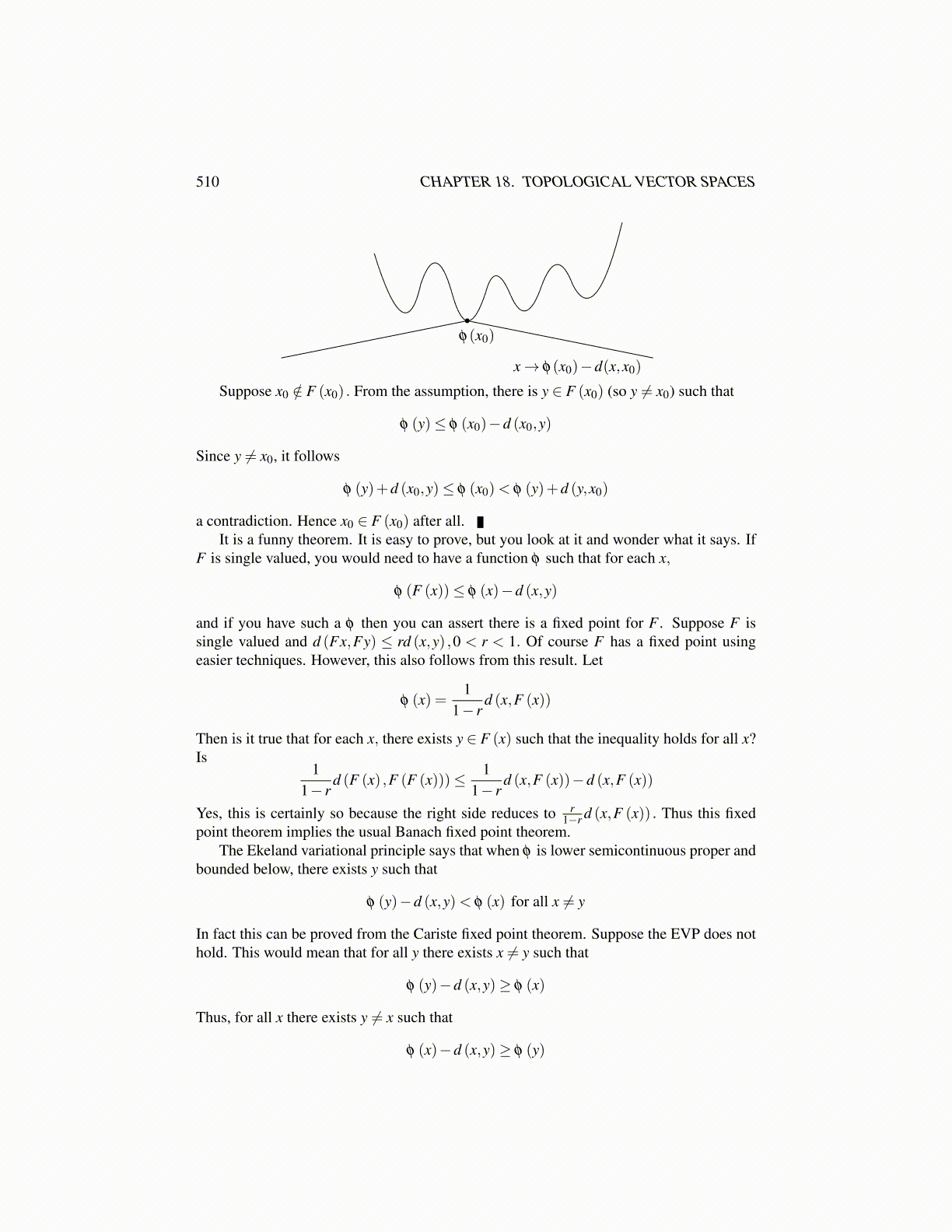
510 CHAPTER 18. TOPOLOGICAL VECTOR SPACES
x→ φ(x0)−d(x,x0)
φ(x0)
Suppose x0 /∈ F (x0) . From the assumption, there is y ∈ F (x0) (so y ̸= x0) such that
φ (y)≤ φ (x0)−d (x0,y)
Since y ̸= x0, it follows
φ (y)+d (x0,y)≤ φ (x0)< φ (y)+d (y,x0)
a contradiction. Hence x0 ∈ F (x0) after all.It is a funny theorem. It is easy to prove, but you look at it and wonder what it says. If
F is single valued, you would need to have a function φ such that for each x,
φ (F (x))≤ φ (x)−d (x,y)
and if you have such a φ then you can assert there is a fixed point for F . Suppose F issingle valued and d (Fx,Fy) ≤ rd (x,y) ,0 < r < 1. Of course F has a fixed point usingeasier techniques. However, this also follows from this result. Let
φ (x) =1
1− rd (x,F (x))
Then is it true that for each x, there exists y ∈ F (x) such that the inequality holds for all x?Is
11− r
d (F (x) ,F (F (x)))≤ 11− r
d (x,F (x))−d (x,F (x))
Yes, this is certainly so because the right side reduces to r1−r d (x,F (x)) . Thus this fixed
point theorem implies the usual Banach fixed point theorem.The Ekeland variational principle says that when φ is lower semicontinuous proper and
bounded below, there exists y such that
φ (y)−d (x,y)< φ (x) for all x ̸= y
In fact this can be proved from the Cariste fixed point theorem. Suppose the EVP does nothold. This would mean that for all y there exists x ̸= y such that
φ (y)−d (x,y)≥ φ (x)
Thus, for all x there exists y ̸= x such that
φ (x)−d (x,y)≥ φ (y)